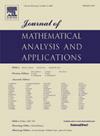Dynamics and backward bifurcations of SEI tuberculosis models in homogeneous and heterogeneous populations
IF 1.2
3区 数学
Q1 MATHEMATICS
Journal of Mathematical Analysis and Applications
Pub Date : 2024-10-03
DOI:10.1016/j.jmaa.2024.128924
引用次数: 0
Abstract
The main difference between tuberculosis (TB) and other infectious diseases is that the transmission of the bacterium should be considered not only as the development of a primary infection, but also as exogenous reinfection or endogenous reactivation. Moreover, individuals in the population may have heterogeneous contact rates, which can be described by complex networks. To this end, we present two differential equation-based TB models in homogeneous and heterogeneous populations. The first model assumes that the number of contacts per unit time is constant for the whole population, whereas the second model considers the heterogeneous number of contacts per unit time for each individual. We derive the basic reproduction number of each model using the next-generation matrix method, and analyze the dynamical properties of each model in detail. We find that the two models undergo backward bifurcations and have the same threshold condition for backward bifurcation. From this threshold condition, we see that the reduced rate of exogenous reinfection of individuals plays an important role in causing the backward bifurcation. Interestingly, the second model allows the threshold condition for backward bifurcation to be independent of network parameters. Thus, unlike other infectious disease models on complex networks, in controlling the spread of tuberculosis among populations with different numbers of contacts, we only need to focus on disease parameters during treatment. Finally, numerical simulations more intuitively demonstrate the impact of parameter changes on the prevalence of tuberculosis and reveal the model's richer and more interesting dynamical properties, such as bistability. Sensitivity analysis indicates that the basic reproduction number is highly correlated with both the relapse rate of latent individuals progressing to active infection and the probability of healthy individuals becoming infected after contact with the pathogen. Therefore, enhancing the detection and treatment of latent cases and reducing contact between infected and uninfected individuals are the most crucial public health interventions.
同质和异质人群中 SEI 结核病模型的动力学和反向分叉
结核病(TB)与其他传染病的主要区别在于,结核菌的传播不仅要考虑原发感染,还要考虑外源性再感染或内源性再活化。此外,人群中的个体可能会有不同的接触率,这可以用复杂的网络来描述。为此,我们提出了两种基于微分方程的同质和异质人群结核病模型。第一个模型假定整个种群在单位时间内的接触次数是恒定的,而第二个模型则考虑了每个个体在单位时间内的异质性接触次数。我们利用下一代矩阵法推导出了每个模型的基本繁殖数,并详细分析了每个模型的动态特性。我们发现这两个模型都会发生向后分叉,并且具有相同的向后分叉阈值条件。从这个阈值条件中,我们发现个体外源性再感染率的降低在导致向后分叉中起了重要作用。有趣的是,第二个模型允许后向分叉的阈值条件与网络参数无关。因此,与其他复杂网络上的传染病模型不同,在控制结核病在不同接触人数的人群中传播时,我们只需关注治疗期间的疾病参数。最后,数值模拟更直观地展示了参数变化对结核病流行率的影响,并揭示了模型更丰富、更有趣的动态特性,如双稳态性。敏感性分析表明,基本繁殖数与潜伏个体发展为活动性感染的复发率以及健康个体接触病原体后受感染的概率高度相关。因此,加强对潜伏病例的检测和治疗以及减少感染者和未感染者之间的接触是最关键的公共卫生干预措施。
本文章由计算机程序翻译,如有差异,请以英文原文为准。
求助全文
约1分钟内获得全文
求助全文
来源期刊
CiteScore
2.50
自引率
7.70%
发文量
790
审稿时长
6 months
期刊介绍:
The Journal of Mathematical Analysis and Applications presents papers that treat mathematical analysis and its numerous applications. The journal emphasizes articles devoted to the mathematical treatment of questions arising in physics, chemistry, biology, and engineering, particularly those that stress analytical aspects and novel problems and their solutions.
Papers are sought which employ one or more of the following areas of classical analysis:
• Analytic number theory
• Functional analysis and operator theory
• Real and harmonic analysis
• Complex analysis
• Numerical analysis
• Applied mathematics
• Partial differential equations
• Dynamical systems
• Control and Optimization
• Probability
• Mathematical biology
• Combinatorics
• Mathematical physics.

 求助内容:
求助内容: 应助结果提醒方式:
应助结果提醒方式:


